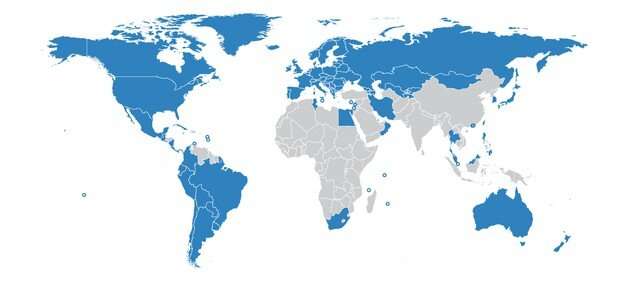
Using the World Mortality Dataset, the largest existing collection of mortality data, researchers of the University of Tübingen and the Hebrew University of Jerusalem have tracked the impact of COVID-19 across more than 100 countries.
Comparing the impact of COVID-19 between countries or during a given period of time is challenging because reported numbers of cases and deaths can be affected by testing capacity and reporting policy. The current study provides a more accurate picture of the effects of COVID-19 than using these numbers, and may improve our understanding of this and future pandemics.
In any given period of time, a certain number of people die due to many particular reasons, such as old age, illness, violence, traffic accidents and more. Researchers are able to predict the number of deaths from these causes over coming months or years, known as expected deaths, using the same information gathered from previous months and years. However, pandemics, conflicts, and natural and man-made disasters cause additional deaths above and beyond those expected, which are known as ‘excess deaths.”
“Measuring excess deaths allows us to quantify, monitor and track pandemics such as COVID-19 in a way that goes above testing and reporting capacity and policy,” says Ariel Karlinsky, a graduate student at the Hebrew University of Jerusalem in Israel, and co-author alongside research scientist Dmitry Kobak, from Tübingen University, Germany. “However, until now, there has been no global, frequently updated repository of mortality data across countries.”
Openly available dataset
To fill this gap, Karlinsky and Kobak collected weekly, monthly or quarterly mortality data from 103 countries and territories, which they have made openly available as the World Mortality Dataset. They then used the data to work out the number of excess deaths in each country during the COVID-19 pandemic.
“We used our data to answer a number of questions,” Karlinsky explains. “Specifically, we wanted to find out whether the pandemic caused excess deaths in the countries we covered and, if so, to what extent. We were also curious to see whether the numbers of excess deaths were matched across countries.”
Their analyses showed that, in several of the countries worst affected by COVID-19—namely Peru, Ecuador, Bolivia and Mexico—excess deaths were more than 50% above the expected annual mortality rate, or above 400 excess deaths per 100,000 people as in Peru, Bulgaria, North Macedonia and Serbia. At the same time, in countries such as Australia and New Zealand, mortality during the pandemic was below the usual level, which the authors suggest is likely due to social distancing measures reducing the number of deaths caused by other infections besides COVID-19.
Furthermore, the researchers found that while many countries have been reporting their COVID-19 death rates accurately, some including Nicaragua, Belarus, Egypt and Uzbekistan have underreported these numbers by more than 10 times.
The situation in Germany
In Germany, according to this study, the total number of excess deaths until now is around 40,000, which is much smaller than 90,000, the reported number of deaths from COVID-19. This is likely due to the decreased number of deaths from other respiratory infections during the winter months. With 50 excess deaths per 100,000 population, Germany suffered less excess mortality than all the neighboring European countries (Netherlands: 110, Belgium: 140, France: 110, Switzerland: 100, Austria: 110, Czechia: 320, Poland: 310) apart from Denmark that did not show any excess mortality at all.
Source: Read Full Article
